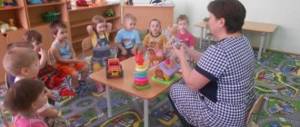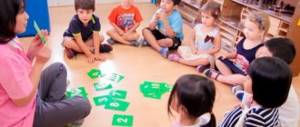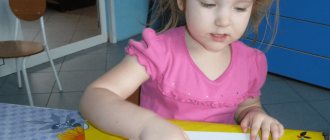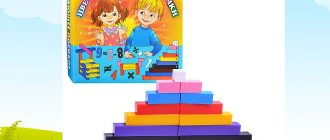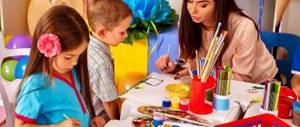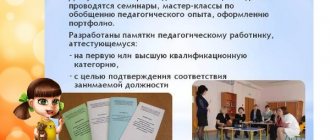Lesson summary on the topic “Summer”
Theme of the week “Summer” Familiarization with the world around us 1. The child should know the signs of summer in nature.
2.Be able to explain what happens to nature in the summer, how the length of day and night changes. 3.What trees look like in summer; what flowers bloom. 4.What do animals and birds do in the summer. 5.What do people do in the summer, how do their clothes change?
Speech development 1. Expansion of vocabulary. Titles. Month, summer, June, July, August, beginning, end, warmth, heat, heat, flowers, garden, vegetable garden, sun, rays, weather, thunderstorm, lightning, thunder. Signs. Warm, late, hot, stuffy, long-awaited, joyful, rainy, cold, cheerful, affectionate. Actions. It has come, it has come, they rumble, they bloom, they sing, it thunders, it sparkles, it bakes, it shines, it burns, it caresses, it pleases. 2. Game “Name it affectionately.” Formation of nouns with a diminutive suffix. The sun is a sweetheart. Sundress - sundress. Cap - cap. Panama hat - Panama hat. Berry - berry. Rain - rain. Cloud - cloud. Meadow - meadow. Flower - flower. Flowerbed - flowerbed. 3. Game “One - many”. Formation of plural nouns in the nominative and genitive cases. Grass - herbs - herbs. Rose - roses - roses. Field - fields - fields. Garden - gardens - gardens. Tree - trees - trees. Sun - suns - suns. Heat - heat - heat. 4. Game "Count." Formation of plural nouns in the nominative and genitive cases. One beam – two beams – five beams. One hot sun - two hot suns - five hot suns. One beautiful rose - two beautiful roses - five beautiful roses. Modeled after the word. Rainbow, sea, beach, green tree. 5. Game “Say with the word “summer””. Formation of adjectives of feminine, masculine, neuter gender. Day (what?) – summer. The weather (what?) is summer. The mood (what?) is summer. Following the pattern with words. Thunderstorm, sun, months, forest, grass, sky, flowers.
Literacy teaching 1. Topic “Repetition”. 2.Repeat what a syllable, word, sentence is. 3.Continue to divide words into syllables. 4. Compiling words from letters (syllables). 5.Continue to learn how to write short words. 6.Working with the text “Summer”. (Isolating sentences from the text.) The child is invited to listen to the text. *The (hot) summer has arrived. *Berries and fruits are ripening. (Harvest.) *The sky is clear, bright. *It rarely rains. (Drought.) *Sunny!
Come up with a title for the story using one word (“Summer”). Write down the story graphically, sequentially calculating each sentence.
____ * ____ ____ * ____ ____ ____ * ____ ____ ____ * ____ ____ ____ * ____
7. Lexical exercise “Think and say.”
Task 1. Who will notice the most fables? An excerpt from 3. Alexandrova’s poem “Joke” is read to the child.
In our alley there is a house with miracles, Go and take a look - you will see for yourself: The dog sits down to play the accordion, Red cats dive into the aquarium, The canaries begin to knit socks, The children are watered with flowers from a watering can, The old man lies on the window, sunbathing, And the granddaughter's grandmother in plays dolls. And the fish read funny books, quietly taking them away from the boy.
Task 2. Selection of synonyms. The adult begins and the child finishes the sentences:
— The rain will soak you, but the sun will dry you. - One loses, and the other... (finds). - If you forget something, then maybe... (you will find it). - First you turn on the light, and when you leave... (you turn it off).
FEMP 1. Topic “Repetition”. 2. Exercise “Compare pictures.” 3.Develop the ability to draw wavy and broken lines, geometric shapes, and connect dots. 4. Game exercise “Compare by making pairs.” 5. Drawing up a geometric pattern in a certain rhythmic pattern. 6.Graphically depict numbers from 1 to 5 in your notebook.
Lesson summary: “Towards summer!”
(Psychologist together with teacher)
Participants: children of the preparatory group, 6-7 years old
Amount of children: 6
Educational area Socialization :
Tasks:
- Emotional development
- Development of such social personality qualities as feelings of compassion, empathy, empathy
- Establishing a trusting, comfortable environment in a group of children
- Improving game interaction skills.
Educational area Communication:
Tasks:
- Teaching children different ways of interacting with each other, different forms of communication
- To facilitate the establishment of contact between children in different forms of work - in pairs, teams, groups
- To cultivate in children a communicative culture and the ability to speak competently.
Educational field Cognition:
Tasks:
- Development of logical thinking, establishment of cause-and-effect relationships
- Promote the development of voluntary attention
- To consolidate children's knowledge about the characteristics of the seasons and their sequence
- To promote the formation of a motive for cognitive activity in children
Educational field Artistic creativity:
Tasks:
- Promote the development of creative thinking and imagination
- To promote the development of the ability to expressively convey the intended image
Equipment and materials:
- Audio recordings: the sound of rain, music from the film “Prostokvashino”, “As if there were no winter”, W. A. Mozart “Music of Angels” to accompany the collective creative work of children (making the sun)
- Printed material from Appendices (1-6)
- A set of massage mats measuring 20*30 cm, according to the number of participants
- Blankets or thin blankets, one per pair of children
- Shawls or scarves, one per pair of children, for blindfolding in the game “Cross the Puddle”
- Pencils, felt-tip pens, paints, wax crayons, plasticine, glue, scissors, brushes, beads, sequins, beads, colored paper, foil, colored cardboard, etc.
Progress of the lesson:
Greetings
The participants, together with the leaders, pass the ball in a circle, greeting each other.
— Guys, what time of year is coming soon?
-Why do all people always look forward to summer? What can you do in summer? What to play?
Autumn.
- Well done! Today we will go towards summer! But first, I suggest you take a look at the rest of the seasons. And the first time of the year that we will visit is autumn!
An audio recording with the sounds of rain is turned on.
- Oh, guys, what are these sounds?
— After such heavy rain there is a lot of...what on the ground? That's right puddle!
- What to do if there is a big puddle in front of you?
“And I know another way to get over a puddle.” I suggest you play the autumn game “Cross the Puddle”. This game will show how friendly, brave you are and how you can help each other. Now we will divide into 3 teams using autumn leaves of different colors.
Children are divided into pairs using multi-colored (green, red, yellow, orange) leaves of large and small sizes (Appendix 1). The one with the big leaf gets up first; he needs to move his friend, who is blindfolded, across the puddle.
Each team is given 2 boards, pairs “cross” the puddle, alternately rearranging the boards.
— In this game, you showed yourself as true friends, supported and helped each other.
Winter.
— Guys, what season follows autumn?
— I have two envelopes, each of them contains a picture on a winter theme. We invite you to guess what is depicted on them. Now we will divide into two teams using snowflakes - blue and white. (Appendix 2)
E.hzzzzzzzzh Guys in teams, please stand one after another, with my finger on the back of the first one of you, I (we) will draw (eat) a picture that is hidden in the envelopes. He will draw the same thing on the back of the person in front, and the next one will draw it on the back. And the one who stands first will have to draw a picture on a piece of paper. (see picture appendix No. 3,4 – Snowman and Christmas tree)
The results are summed up.
— What games can be played only in winter?
- Yes, in winter it is very interesting and fun, but the weather outside can be like this - wind, blizzard, snowfall. Of course, you can’t go outside in this weather, but you can visit each other. Here is a house of blue snowflakes, and white snowflakes live in this house. When the music plays, everyone has fun, dances, dances in a circle, but when I say the word “snowfall”, everyone must hide in their house.
“Guys, we are so friendly, it’s nice to visit such good friends.”
Spring.
While the children are playing, the teacher places flowers in the “clearing”; words on the theme of a forest clearing are written on them (according to the number of participants). Sample list of words: GRASS STREET FLOWER STONE HEDGEHOG BUTTERFLY BEETLE SNAIL CLOUD FROG TREE MOUSE MUSHROOM. (Appendix No. 5) Flowers are turned words down.
— While we were hiding from the snowfall, the snow melted and the first flowers appeared. They are white because they are still under the spell of winter. Let's disenchant this clearing so that there are real bright beautiful spring flowers on it.
— As you already guessed, these are unusual flowers. On the flowers, on the inside, are written various words related to the forest clearing; you need to take one flower at a time and depict what is written there without the help of words, and we will guess.
Summer.
- Well done, what do you think, without what is the onset of summer impossible? Children are shown a pre-prepared sun without rays. (Appendix No. 6)
- Look how sunny it is in our clearing!
- I think the sun is missing something!
- Let each of us give our own ray of sunshine. Take one ray at a time, color it as you wish, in any color, you can use anything - pencils, felt-tip pens, crayons. You can also draw any drawings you want on the rays. You can use beads, beads, sequins.
- Guys, I propose hanging our sun in the group so that we always have a good, summer, sunny mood. So that it is always warm in our group!
Parting.
— We got a very cheerful, unusual sunshine, warm, affectionate. Let us share warmth, affection, and joy with each other in a circle. Let's convey a good mood to each other with a smile.
The full version of working with applications is available.
